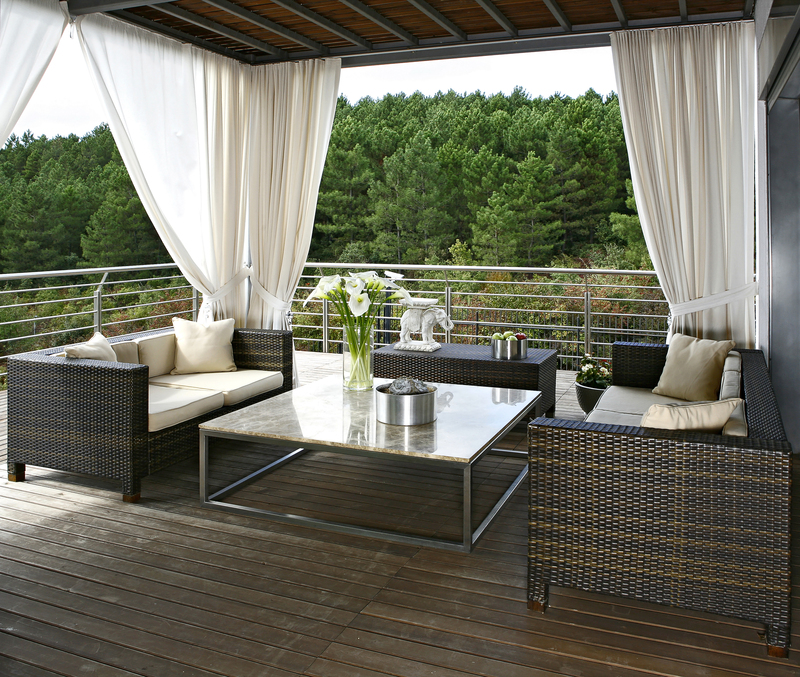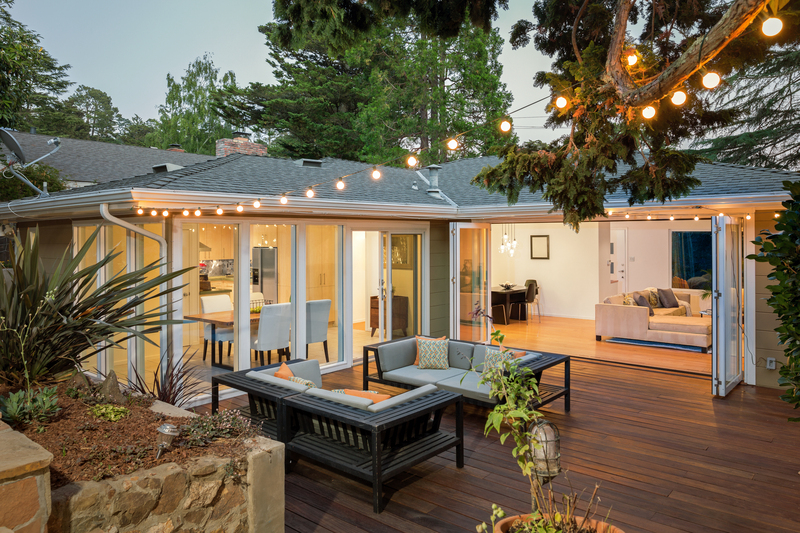The Rise of Vertical Gardens in Modern Living
Posted on 30/08/2025
The Rise of Vertical Gardens in Modern Living
Modern urban living has brought about a significant shift in the way we interact with nature. As cities grow denser and green spaces become scarce, innovative solutions such as vertical gardens (also known as living walls or green walls) have emerged to reconnect people with the environment. The rise of vertical gardens exemplifies human ingenuity in response to urban challenges, blending agriculture, architecture, and environmental consciousness. Let's explore the world of vertical gardens, their benefits, uses, and how they are transforming spaces in the 21st century.
What Are Vertical Gardens?
Simply put, a vertical garden is a method of growing plants upward using vertical surfaces, rather than traditional horizontal planting. These gardens can range from small-scale indoor plant displays to massive outdoor green walls that envelope the sides of buildings. Vertical gardening is an artful integration of plants and structure, utilizing hydroponics, soil, or modular planting systems to sustain healthy plant growth.
Types of Vertical Gardens
- Living Walls: Large installations often fitted to building exteriors or interiors, with irrigation systems and substrate supporting the plants.
- Green Facades: Plants such as climbing vines are supported by trellises or wire frameworks that encourage upward growth.
- Vertical Planters: Modular systems, stacking pots, or hanging planters suitable for residential and small commercial areas.

The Evolution and Popularity of Vertical Gardens
The concept of vertical gardening is not entirely new -- ancient civilizations such as the Babylonians are credited with the Hanging Gardens of Babylon, an early marvel of green architecture. However, modern vertical gardens have risen in popularity thanks to advancements in materials, irrigation technology, and a growing need to optimize limited urban space.
Key Factors Driving the Growth
- Urbanization: As cities expand upward, the need to maximize green areas without consuming extra land becomes critical.
- Environmental Awareness: Increasing consciousness about sustainability and climate change inspires individuals and organizations to incorporate greenery in innovative ways.
- Architectural Trends: Biophilic design -- the concept of integrating nature into built environments -- is a leading trend in architecture and interior design.
- Technological Advancements: Improved irrigation, lightweight materials, and modular systems make it easier for anyone to create and maintain a vertical garden.
Benefits of Vertical Gardens in Modern Living
Vertical gardens are not just visually appealing -- they deliver a host of practical and environmental advantages that make them a standout feature in contemporary living spaces. Here are some of the standout benefits:
1. Maximizing Limited Space
In densely populated metropolitan areas, where outdoor space is at a premium, vertical gardens allow city dwellers to enjoy lush plant life without sacrificing valuable square footage. They transform bare walls, fences, and even balconies into productive green areas.
2. Improved Air Quality
One of the most significant vertical garden advantages is air purification. Plants filter out pollutants and absorb carbon dioxide, producing oxygen and contributing to a healthier indoor atmosphere. Living walls can help reduce levels of volatile organic compounds (VOCs) commonly emitted by furniture, electronics, and construction materials.
3. Thermal and Acoustic Insulation
Plants act as natural insulators. Vertical gardens can regulate a building's temperature, keeping interiors cooler in summer and warmer in winter, which translates to lower energy bills. Additionally, their dense foliage absorbs sound, reducing noise pollution -- particularly valuable in bustling urban environments.
4. Biodiversity and Habitat Creation
Vertical gardens create havens for urban wildlife such as pollinators, birds, and beneficial insects. By introducing diverse plant species, they enhance urban biodiversity and help sustain local ecosystems.
5. Mental Health and Well-Being
Interactions with greenery have been consistently linked to reduced stress, improved mood, and greater productivity. Bringing a vertical garden into a home or workplace supports mental health by offering a constant connection to living nature.
Vertical Gardening Indoors vs. Outdoors
Indoor Vertical Gardens
Indoor vertical gardens are becoming a popular feature in modern homes and offices. They can range from small kitchen herb walls to entire living room installations. Indoor systems typically use low-maintenance plant varieties suited for low-light and require efficient irrigation to prevent water damage.
- Air quality improvement is particularly noticeable indoors, where pollutants tend to accumulate.
- Aesthetic versatility: Indoor green walls can be designed to suit any interior decor style.
- Freshness at your fingertips: Home chefs can grow herbs and edible greens year-round with convenient vertical planters.
Outdoor Vertical Gardens
Outdoor vertical gardens are often more expansive, integrating into building facades, public spaces, or patios. They can support a wider range of plant species, including flowering plants, succulents, and native species that attract local fauna.
- Energy efficiency: Outdoor living walls shield buildings from direct sunlight, lowering cooling demands in summer.
- Community impact: Large public installations beautify urban spaces, reduce dust, and promote sustainable urban design.
- Rainwater management: Properly installed vertical gardens can absorb rainwater and reduce stormwater runoff.
How to Start Your Own Vertical Garden
1. Choose Your Space
Identify a suitable wall or vertical structure that receives ample light. For beginners, a small section of fence, balcony railing, or a sunny indoor wall is ideal.
2. Choose the Right Plants
Select plants based on the light, temperature, and humidity of your chosen location. Some excellent choices include:
- Ferns and mosses for shady, moist areas
- Succulents and cacti for sunny, dry spots
- Herbs like basil, thyme, and oregano for kitchen gardens
- Trailing vines such as pothos, philodendron, or ivy
3. Pick a Vertical Gardening System
There are many options, from store-bought modular planters to DIY designs using recycled materials. Key system types include:
- Felt or fabric pockets
- Stackable planters
- PVC pipe planters
- Wooden pallet gardens
- Professional hydroponic panels
4. Install Irrigation
Proper watering is fundamental for vertical gardens. Simple setups use hand watering, but automated drip irrigation systems ensure even moisture and minimize effort for larger installations.
5. Maintenance
- Regularly check for pests and diseases.
- Trim plants to prevent overgrowth and maintain aesthetics.
- Monitor nutrient levels; add fertilizer as needed.
Design Inspiring Spaces with Vertical Gardens
Vertical gardens are increasingly used as statement pieces whether in homes, businesses, or public spaces. Here are some inspiring ways to incorporate living garden walls into modern environments:
- Office Lobbies: Create a striking first impression and improve air quality for staff and visitors.
- Residential Interiors: Transform blank walls into lush, calming oases.
- Retail Stores: Enhance brand identity and customer experience with interactive green installations.
- Urban Streetscapes: Revitalize city centers, reduce heat islands, and add natural beauty to public spaces.
- Hospitality Venues: Elevate the aesthetic value and ambiance of hotels, restaurants, and cafes.
Case Studies: Vertical Gardens Around the World
- One Central Park, Sydney: This iconic residential tower boasts one of the world's tallest vertical gardens, designed by botanist Patrick Blanc. It serves as an urban habitat, air purifier, and architectural landmark.
- Musee du Quai Branly, Paris: The building's lush exterior living wall has become a signature feature, blending art, architecture, and horticulture.
- Singapore's Supertree Grove: These massive tree-like structures are enveloped with vertical gardens, integrating solar power generation and rainwater harvesting.
Environmental Impact of Vertical Gardening
As eco-friendly design gains momentum, vertical gardening helps advance several urban sustainability goals:
- Carbon sequestration: Plants capture and store carbon dioxide, mitigating emissions.
- Temperature control: Green walls reduce urban heat island effects and lower surrounding temperatures.
- Air purification: Certain plant species are exceptionally effective at removing VOCs and airborne particles.
- Rainwater absorption: Vertical gardens help manage urban runoff and improve water quality.
Challenges to Consider
While the rise of vertical gardens marks a positive trend, there are important challenges and considerations that must be addressed for long-term success:
- Installation Cost: Professional systems and large installations can be expensive and may require structural modifications.
- Maintenance Needs: Vertical gardens demand regular care to prevent plant death, pest infestations, and irrigation issues.
- Plant Selection: Not all plants thrive in vertical set-ups; careful consideration of microclimates is essential.
- Weight Constraints: Proper assessment of the supporting wall or structure is vital to prevent damage or collapse.

Future of Vertical Gardening in Urban Landscapes
Looking ahead, vertical gardens will play a crucial role in urban sustainability and lifestyle. With ongoing research and innovation, we can expect:
- Integration of Smart Technology: Automated watering, light sensors, and "plant health" apps will make maintenance easier and more efficient.
- Greater Accessibility: As costs lower and systems simplify, more homes and businesses will adopt living walls.
- Food Production: Urban agriculture is increasingly utilizing vertical gardening to grow herbs, vegetables, and fruits in compact city environments.
- Policy & Incentives: Many municipalities now recognize the value of green walls, offering incentives for eco-friendly building design.
Conclusion: Embracing Green Innovation
The rise of vertical gardens in modern living signals a pivotal shift toward greener, healthier, and more sustainable cities. Whether applied in private residences, commercial properties, or public installations, vertical gardening offers an innovative pathway to blend urban development with ecological stewardship.
As more people experience the multifaceted benefits--from improved air quality and energy efficiency to enhanced well-being and biodiversity--the popularity and adoption of vertical gardens will only continue to flourish. Embracing this green revolution is not just a design choice, but a vital investment in our collective future.
Transform Your Space, Transform Your Life
Are you inspired to join the movement? From simple DIY planters to breathtaking living walls, there are endless ways to bring the magic of vertical gardens into your modern lifestyle. The time to green your world -- from the ground up -- is now.



